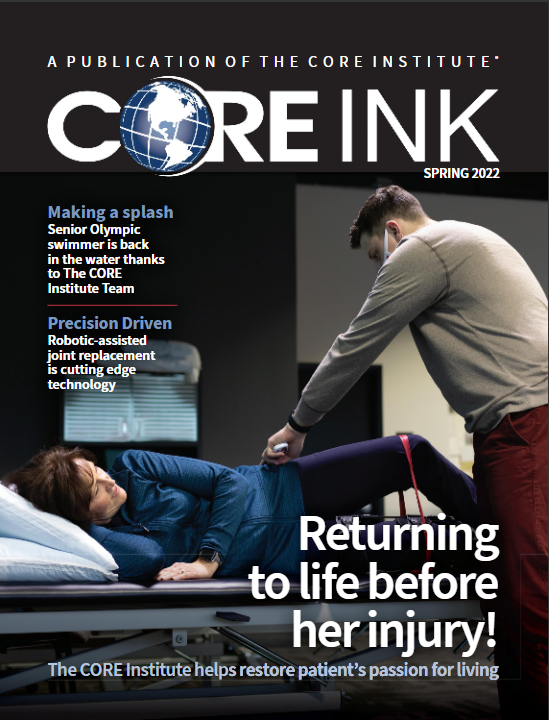The Journey Back
By Brian Sodoma
John Lopez doesn’t like to sit around much. The Arizona native was always active as a child and in his adult years. Even after retiring from a career in telecommunications, he enjoyed competing in large walking and running events to benefit charities and dabbling in different types of exercise classes; among his favorites is kickboxing.
In his 60s, however, Lopez began to develop arthritis in his knees. He turned to pain medication injections at first, but after several years of that approach his physician finally admitted that there wasn’t more that could be done. Stubbornly, he tried to persevere for a couple more years, but his knees further deteriorated, and he finally heeded his doctor’s suggestion to visit The CORE Institute.
“It got so bad I really couldn’t do anything anymore,” the now 77-year-old recalled.
Bone on bone
As had been expected, imaging revealed cartilage in both knees was completely deteriorated, a condition commonly referred to as knees being “bone on bone,” where the femur (upper part of the leg) and tibia (lower leg bone) rub together at the knee without the natural cushion of cartilage between them.
It’s a common trade-off for active adults as they age. The health benefits of being active still outweigh the wear and tear experienced in certain areas of the body; but knee joints, in particular, may eventually require medical intervention.
Amalia de Comas, MD, an orthopedic joint replacement surgeon and musculoskeletal oncologist at The CORE Institute, discussed with Lopez his surgical options. Tired of pain being his new normal, Lopez scheduled his first knee replacement surgery, on his left knee, for April 2016. He would follow that up with knee replacement surgery on his right knee in February 2017.
For both surgeries, Dr. de Comas used computer navigation technology to precisely place the knee implants to optimize performance and rebuild Lopez’s arthritic knee.
“The technology is very accurate. It allows us to plot points live on the knee and tells us if we’re within less than a millimeter of where we need to be,” Dr. de Comas explained.
Active recovery
Being active his entire life served Lopez well during the recovery period. After the first knee surgery, he was back in the gym “on light duty” within six weeks and at full speed after eight weeks. After his second surgery, he was back in the gym within eight weeks and at full speed by 10 weeks, he said.
While rehabilitating his knee, he took advantage of virtual visits with his physical therapists and stayed on top of his daily stretches and exercises. Patients are encouraged to get moving on the day of surgery to promote recovery and performance, Dr. de Comas emphasized.
“You really want to get that motion right back in the knee. Once you know you can get going again, you need to be bending, straightening, you don’t want it to heal stiff or contracted,” she added.
No pain, plenty to gain
Today, Lopez enjoys an active life again. The only restrictions he has are to avoid a lot of running and jumping, which could wear down the materials sooner than the roughly 15 to 20 years a new knee typically offers. But that doesn’t mean the active retiree doesn’t enjoy giving his new knees a good stress test from time to time.
“I feel great and I have absolutely no pain. I take my classes at the gym; sometimes I’ll even do two classes back to back, and afterwards I still feel good. It’s a great feeling,” Lopez added.
SUBSCRIBE TO CORE INK NEWSLETTER
Sign up to receive stories and information from The CORE Institute, including expertise from our providers and news about the latest technology advancements helping our communities.

